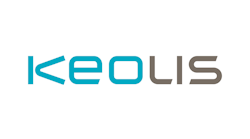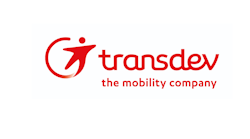Autonomous technology is making headway in the transit industry in the United States. From working to have self-driving trains entering into the national market, self-driving cars branching into rideshare programs and shuttles that offer a solution for first-mile last-mile connections. At the UITP Global Public Transport Summit autonomous technology was on display.
Operating on a loop out-front of the conference center Transdev in partnership with EasyMile as well as Keolis in a partnership with NAVYA both showcased fully autonomous shuttles.
Transdev and EasyMile
Mathieu Petit, a spokesman for Transdev partner EasyMile explained that the company’s fully autonomous shuttles were being tested in locations in Singapore, Japan, Europe and the US. The technology in the shuttle adapts to its surroundings.
“First we create a map,” Petit said in regards to the demonstration shuttle. “To program it I had to create I had to create a map of the surroundings and the shuttle is constantly comparing the map to what it sees.”
Questions raised about autonomous shuttles is safety. With no operators in the shuttles the question becomes how quickly do they stop?
“It completely stops, because we don’t want any contact,” Petit added that they didn’t even want a water bottle to come across the path. “Our goal is to have no accidents.”
To monitor any items that comes across the shuttles path, it is equipped with LIDAR sensors, GPS, odometry and IMU. There are also emergency stop buttons located within the shuttle in clear view of passengers.
“We are creating some intelligence to create movement around the shuttle. It will strictly follow its own lane, unless someone is in its way,” said Petit. “We want to have a control center in a few years. You will have a button (in the shuttle) that will talk to someone in the control center.”
Mark Joseph, CEO, Transdev Americas stated, “The future of autonomous vehicles is now. We’ve been selected to run the first autonomous vehicle in a gated community in Florida. We’re also the most multimodal, we see autonomous technology as something for our cities. We believe that we can provide a first-mile last-mile solution with these vehicles.”
Keolis and NAVYA
Nicolas de Crémiers, marketing director for Keolis partner NAVYA said that they arrived just before the conference started and programed in two stops. “You choose where you want to go, pick on the screen and go.”
NAVYA manages the shuttle and partner with Keolis to operate it.
The technology of the shuttle is based on GPS and LIDAR, there are four sensors in the front and four in the back. The LIDAR uses light waves to create a view of the area around it. Crémiers explained the shuttles always operate on a set route.
“In Switzerland we are on open roads where there are also pedestrians and cars,” Crémiers said. “We are the only one to be in construction, manufacturing and deployment. Most of our pilots last a year. We want to know how they run in different conditions. If you only do a pilot for a few days, you don’t get a good idea.”
When the shuttle piloted in France during for a month they had around 500 thousand people. Crémiers said that one of the reasons that they run such long pilots is so that people are able to adapt to them.
“People play with the shuttle. People eventually get a better understand of the shuttle,” Crémiers explained that people would play ‘chicken’ testing the shuttles stopping ability. “In Paris they played with it at first, but now since it took them from their train station to their office, they like it.
The shuttle in Paris operates with 24-hour service.
The shuttle does not feature any pedals or a steering wheel inside, but it can be operated manually by a joystick when moving the shuttle to the track. Without installing the either the pedals or the steering wheel, Crémiers said they found that people felt safer and they stopped thinking about it.
In keeping the shuttle secure from hackers Crémiers explained that the software is secure. “You don’t have a remote in the shuttle, which is the safest way to prevent hacks.”





